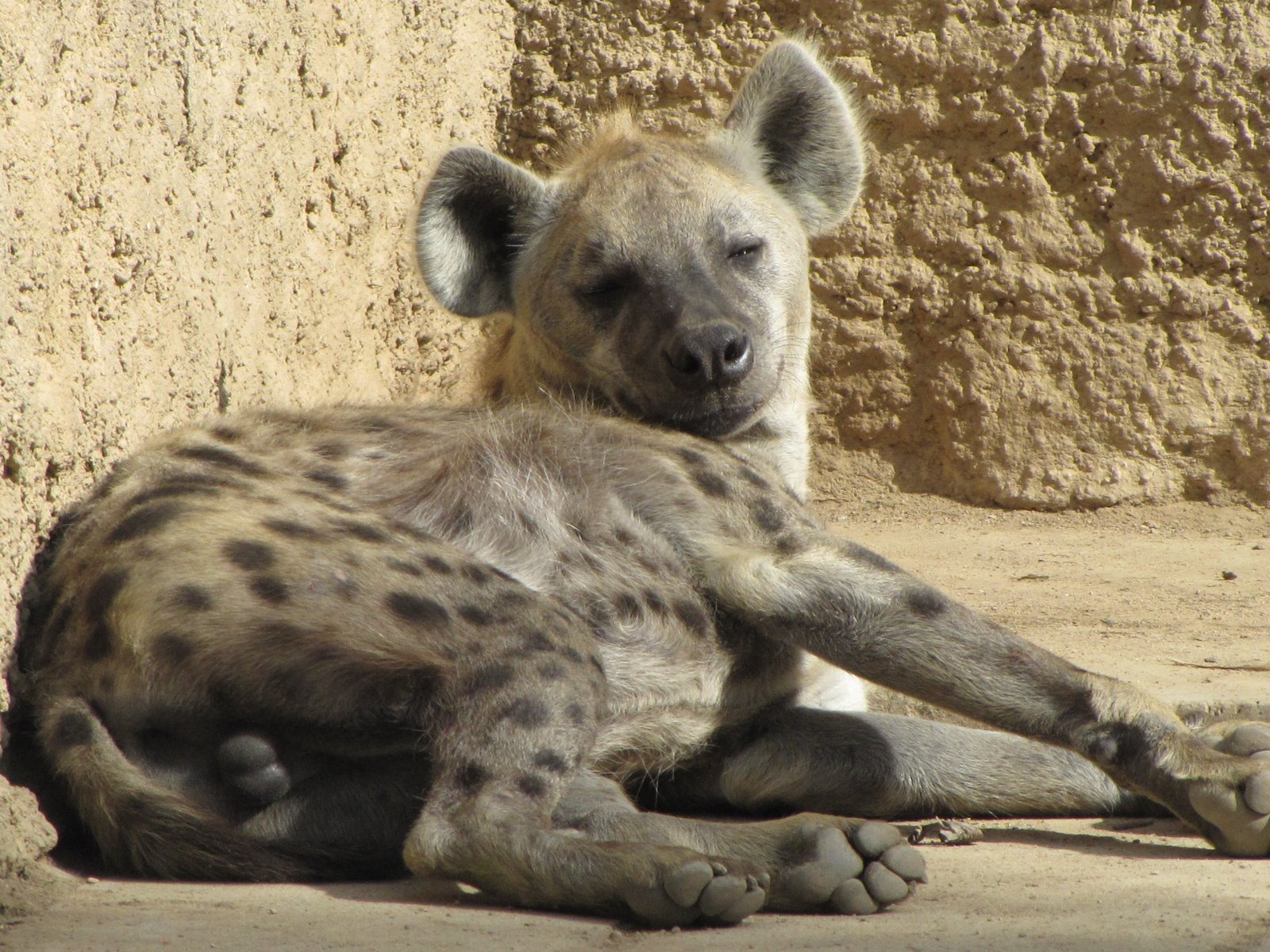
Spotted hyena, or Laughing hyena(Crocuta crocuta)
Phylum —chordata
Class — mammalia
Order — carnivora
Family — hyaenidae
Genus—crocuta
Appearance
Spotted hyena has a sandy, yellowish or gray coat with black or dark brown spots on the over most of the body. The spots are darkest in younger animals and can be almost completely absent in very old animals. The coat is very coarse and wooly. The body length from head to tail is about 95 to 150 cm and the height at the shoulder is reported from about 75 cm to 85cm. The tail is about 30 to 36 cm long and ends in a bushy black tip. About two-thirds of the tail is composed of bone with the other one-third being solely hair. Crocuta crocuta is sexually dimorphic with females weighing around 6.6 kg more than males. Male weight ranges from about 45 to 60 kg whereas females weigh 55 to over 70 kg. Spotted hyenais strongly built, with a massive neck and large head topped by rounded ears, unlike the other hyenas.
Habitat
Spotted hyenas live throughout sub-Saharan Africa (Chad, Central African Republic, South Sudan, Ethiopia, Kenya, Tanzania, Botswana, Angola, Namibia, and parts of South Africa), though not in the far south or the Congo rainforests.
Behavior
In terms of their social intelligence, Spotted hyenas are considered to be close to the same level as certain primates. They have excellent night vision, being mostly nocturnal, hunting at night and sleeping or staying near their den in the daytime. They have a matriarchal social order of related individuals that are called clans. One alpha female leads the clan. These animals mark their territory by scratching the ground and with an oily substance that they secrete from their anal glands. Areas far away from the den are their “latrines”, another way of marking their clan’s territorial boundary. Spotted hyenas have a large vocal range and communicate with clan members with whoops, yells, grunts, growls and giggles. The giggling sounds like manic laughter, hence their other name.
Diet
Spotted hyenas are omnivorous animals that hunt and scavenge. When hunting alone, they prey on smaller animals such as hares, foxes, jackals, birds, fish, and snakes, as well as carrion. In a group they hunt medium to large-sized hoofed animals like zebra, wildebeest, Grant’s gazelle, Thompson’s gazelle, topi, waterbuck, eland, hartebeest and impala. They also eat eggs, fruit and invertebrates.
Reproduction
Mating for this species is polygynous. Males do a bowing display for attracting females before mating. Breeding takes place at any time of the year at intervals of 11 and 21 months. Gestation is for about 4 months, and 1-3 cubs (with an average of 2) are born inside a birthing den. The milk of a Spotted hyena is very rich, and cubs can last for a few days between feeds, unlike wild dogs and lions. Females have the sole responsibility for bringing up the cubs. At 2-6 weeks of age the cubs are moved by their mother to a communal den. The young are entirely dependent on milk for about 8 months and are weaned at 12-18 months old. They reach maturity at the age of 2-3 years. Males leave their birth clan at around 2 years old, whereas females remain.
In captivity
The average lifespan in zoos is 12 years, with a maximum of 25 years.
If a person decides to have such an exotic animal as a hyena at home, then first you need to take care of security. It is not recommended to get such an animal in an apartment, the best option is a country house. At the same time, it is necessary to build an aviary with strong metal bars. When looking for the location of the enclosure, it is necessary to take into account the habitat of hyenas. They like when it`s cool, but not cold.
Hyenas are easy to contact with humans, but only if they have gained trust. In order for a predator to recognize a person as a friend, you do not need to keep it in the enclosure all the time. Still, this is a wild animal and it needs freedom.It is recommended to feed it with dry food. Meat should be given very rarely and in small portions. It is worth noting that after eating meat, the animal, even if it is raised at home, instinctively becomes aggressive. As often as possible, the pet should include vegetables and fruits in the diet. They will fill the body with vitamins and minerals, make the hair thicker.
Treat such a pet with affection and love and you will get the same in return.
 Russian
Russian
 English
English
























